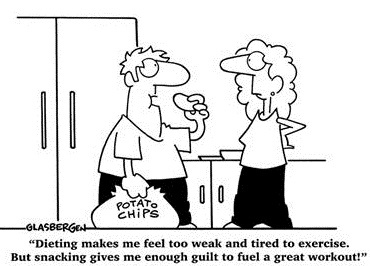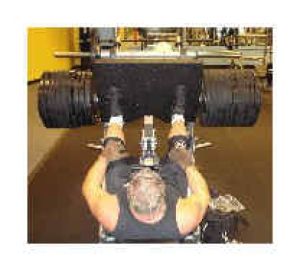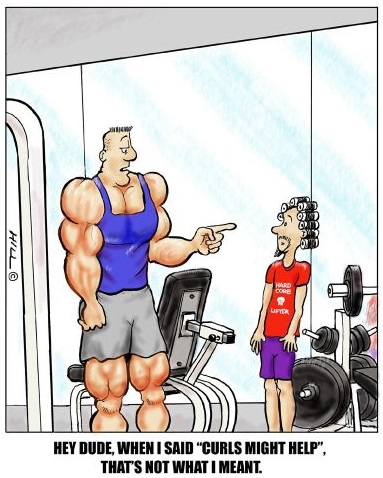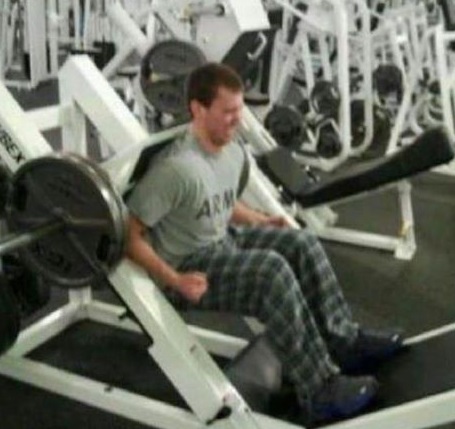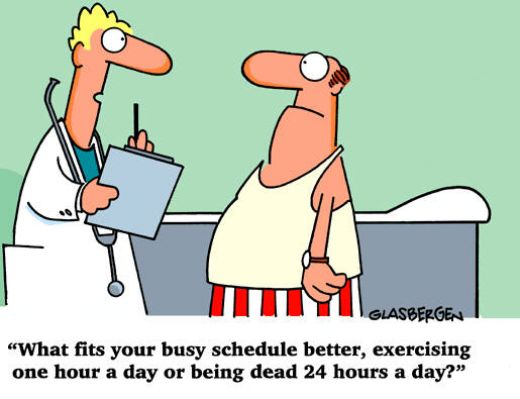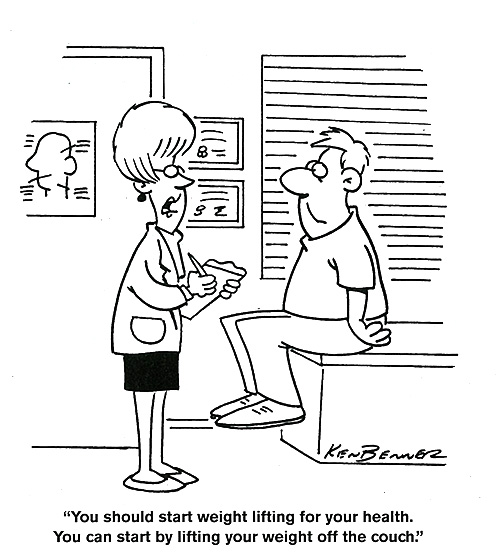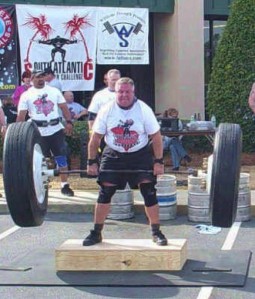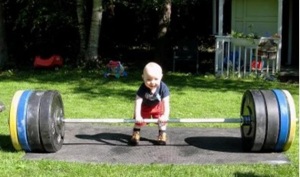What can the right kind of protein do for you?
It can help you build muscle and strength, that’s what.
Here’s a blog on the ins and outs of protein supplementation.
Ever read a muscle magazine?
It’s bizarre…
There’s usually about 20 pages of articles of how to build muscle
—- and about 174 pages of ads… mostly for supplements.
One of the most commonly over-advertised item is Whey Protein.
I say over-advertised not because it isn’t important.. it is….
… but because there are so many companies selling the same product claiming that theirs somehow magically works better than everybody else’s.
Man, take it from your ole Uncle Nuts…
— if you buy pure 100% Whey Protein Isolate- (compare and get your best price!!)
— you’ll get 100% of what you need, and 0% of what crap somebody wants to put it in it to make it more profitable.
Let me tell you why supplementation with Whey Protein is important in the first place.
There’s no doubt the average shmoe gets more than his daily requirement of protein, -along with way too much fat – consuming products like Big Mac’s, Hot Dogs, BBQ, fried cheese sticks, shakes, ice cream, etc.
He doesn’t work out, so he doesn’t build muscle- he wastes it. His body doesn’t need supplemental protein. One morning dose of a BK fastfood breakfast sandwich, and Mr. Average Softbody’s got a high fat-carb artery hardon, for Chrissake!
But if you’re working out pretty hard, you’re probably not eating that crap anyway, and your body needs GOOD QUALITY protein for muscle synthesis (new muscle fibers)– as much as 2 grams per pound of body weight. (1-1.5 g should be ok unless you work out like the Governator, or want to bulk up real quick.)
It’s important to remember that while Carbohydrates are necessary for the proper operation of the Central Nervous System and for energy to workout—
———— Protein is the stuff that makes muscle.
Whey Protein provides plenty of BCAA’s – Branched Chain Amino Acids – nutrients that are essential for all sorts of functions in the mind and body… one of them, leucine, a key agent in strength and recovery.
It provides glutamine- used throughout the gastrointestinal system to insure healthy digestion and waste disposal – as well as being another key agent in exercise recovery.
Supplemental protein also enhances glutathione production – an antioxidant which slows the aging/mutation of cells. It has anti-inflammatory properties, and boosts the strength of your immune system. And it’s another extremely important element in post-exercise recovery.
There are no side-effects that have been documented with moderate use of supplemental protein, either.
Why wouldn’t every hard-working gym rat want to supplement with it? I got no idea.
Ok, now- here’s the curve: not all proteins are created equal.
Yeah, I know what I said earlier about competing products… but that’s not what I’m talking about.
There are several forms of protein available in supplement form… milk proteins
(like Whey, Cassein), egg proteins, and soy proteins.
While all three of these types are considered high quality bio-available proteins,
Whey is considered by most body builders as the most readily synthesized..
— although if you’re one of those alternative veggie types, Soy should work almost as well until you (hopefully) evolve into a carnivore like nature intended.
(Good luck with that… in the meantime, might I you take a Savate course, instead?… Oh, and keep those soy farts outta MY gym. Thanks.)
Seriously, Soy Proteins are high in certain phyto-estrogens, so it’s not a great first choice,
—- unless you’re trying to look good in tube top, pumps, garter belt, and a micro skirt.
To make it more difficult, many protein supplements aren’t 100% protein.
Remember- buy 100% protein isolate- no fillers, no junk.
I know the price has skyrocketed recently, but repeat – Don’t buy CHEAP CRAPPY PROTEIN!
You want the “isolates” instead of concentrate, if only to avoid extra lactose and fats… the cost difference is nominal.
“Hydrolysates” are fancier and much more expensive than either concentrates or isolates… but their easier digestibility doesn’t really make up for the cost difference.
Watch the ingredient list on the brand you’re looking at… a few carbs in the mix might serve to help get muscle synthesis going.. but more than a few grams will just add unwanted calories to the equation.
If I’m gonna intake carbs, I want to taste them…..
….. not gulp em down like you’ll end up doing with every protein shake you’ll ever take regularly.
YUK.. why can’t these companies make a protein supplement that doesn’t smell or taste like the inside of a bovine intestine??? Jeezzz.
In all fairness, the protein companies have ramped up the tastiness of their products in the last coupla years…
Back in the bad old days, all we had wuz smelly, gloppy egg protein powder…. and that -wuz indescribably horrific- in comparison. I personally find Optimum Nutrition’s (ON) French Vanilla flavor not too terrible at all .. and it mixes well with all the other crap I throw in with it. “Designer Whey” tastes pretty damn good, too.. but it’s not all isolates.
There are ‘pre-mixed’ bottles of protein drinks – you’ve probably seen these in the cooler at the gym. Again, look for a lot of added stuff… and since these are ‘pasteurized’, much of the protein has been denatured- so less of the protein is really bio-available. And considering the taste of these products…. I think Elmer’s glue tastes better – it’s not worth the price to me.
There are protein products made for hard-gainers… these contain mucho additives, mostly in the form of carbs and fats… sure, they’ll put weight on ya, but eating two of mom’s lemon meringue pies a day will too.
I’m not saying these are worthless.
I’m just saying I’d rather have pie.
Here’s another curve:
There are sometimes when you might want a slow absorbing protein like cassein, instead of a quicker absorbing protein like Whey; for instance, at night before bed.
All nite long while you are sleeping ( theoretically sleeping… you might be doing all kinds of stuff other than sleeping… how the hell should I know… but if it involves more than 3 redheads, and you need help, call me )…. your body is rebuilding your muscles and creating new muscle fibers. It uses protein to do that.
But, if you took Whey at 10:30pm, by 2 am it’s all absorbed – and your protein gauge is on E.
However, Cassein takes about 4-6 hours to absorb, it’s kind of like a time release deal…
So, you got protein to burn until it’s time to tell all them girls to go the hell home.
(why the hell didn’t you call me???)
Some guys try to get around using whey protein powder by taking AMINO tabs, BCAA’s, and Glutamine.
While I readily admit that I use these supplements myself, I use them to kick up the value of the protein powder which I also use.
They’re not a substitute for whole protein strands… which is what your body looks for to build muscle.
Interestingly enough, though…
BCAA’s are being studied because of their ability to be burned directly as fuel for a workout, when carbs are depleted. I swear by em…. but, again they’re not a substitute- they’re a add-on.
The bottom line of Protein is this:
you gotta have it if you’re gonna build muscle.
Too much is too much, but enough is just right.
But prepare yourself; it’s not gonna smell or taste like the girl next door.
Tough it out, buddy.
oh…., and STAY AWAY FROM THE SNACK BAR!!!

